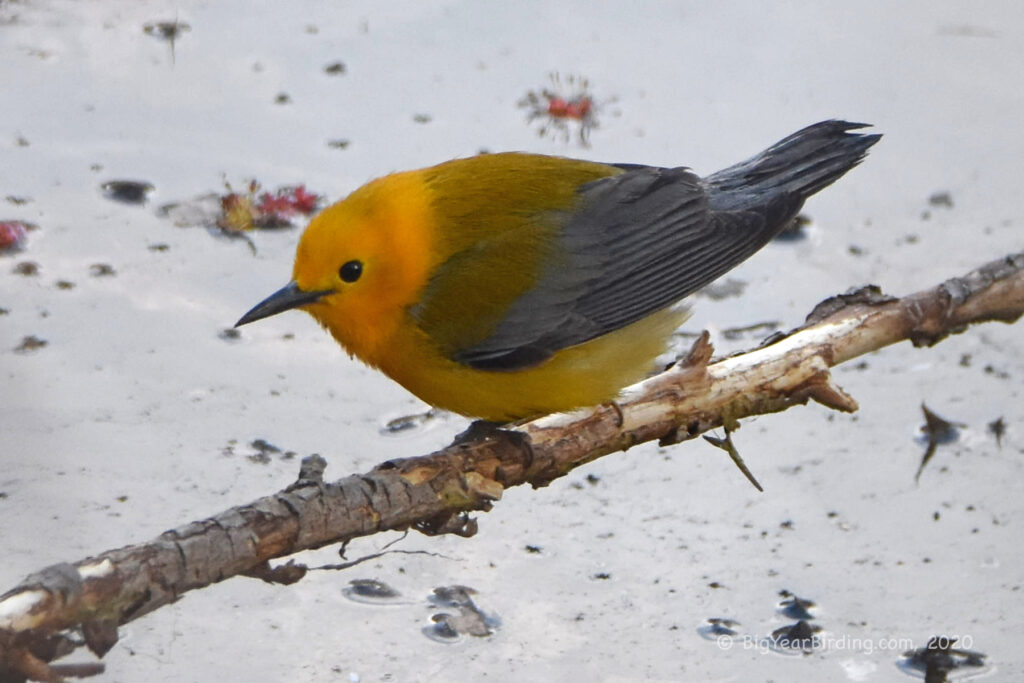The Prothonotary Warbler (Protonotaria citrea) is a small songbird with a bright yellow-orange head and underparts, contrasting with its bluish-gray wings and back. It is roughly 4.5-5 inches long and weighs about 0.4-0.5 ounces. Males and females have similar plumage, but males have slightly brighter colors and may have a slightly larger bill.
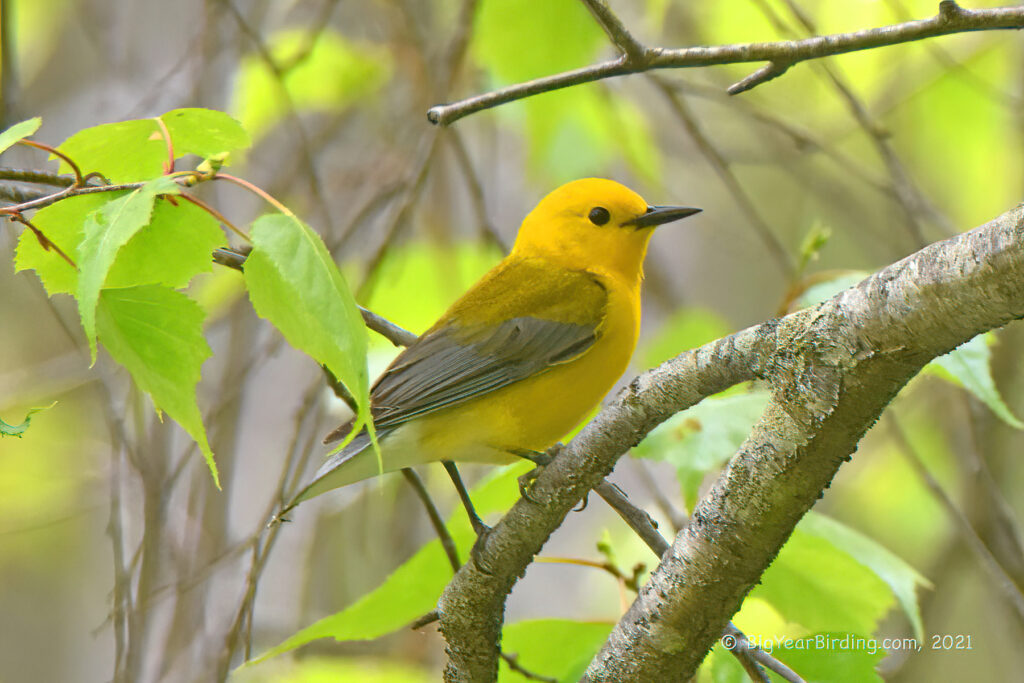
One of the most distinguishing field marks of the Prothonotary Warbler is its bold yellow-orange head, which is visible from a distance. Additionally, it has a relatively large and stout bill compared to other warbler species. Its bluish-gray wings and back are also unique, and it lacks the streaking or other patterns found on many other warblers. The Prothonotary Warbler’s bright colors and distinct field marks make it relatively easy to identify in the field.
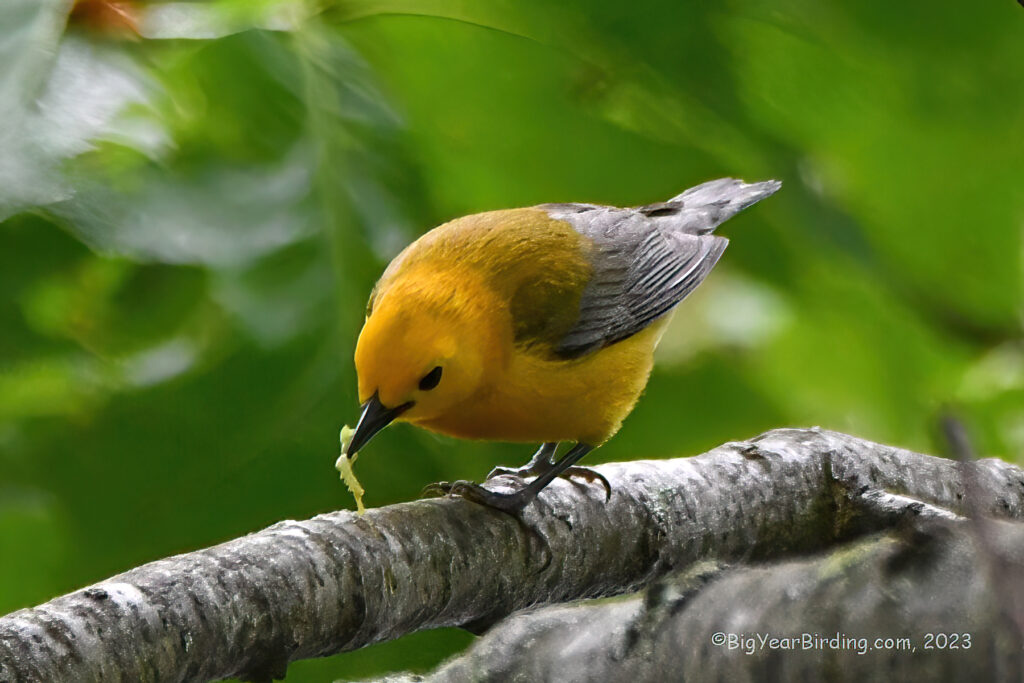
The Prothonotary Warbler is a neotropical migrant that breeds in the eastern United States, from the Midwest to the Gulf Coast. It is primarily a bird of bottomland hardwood forests and wetlands, where it nests in cavities or nest boxes near water. During the winter, Prothonotary Warblers migrate to Central and South America, where they inhabit mangrove swamps and other wetland habitats.
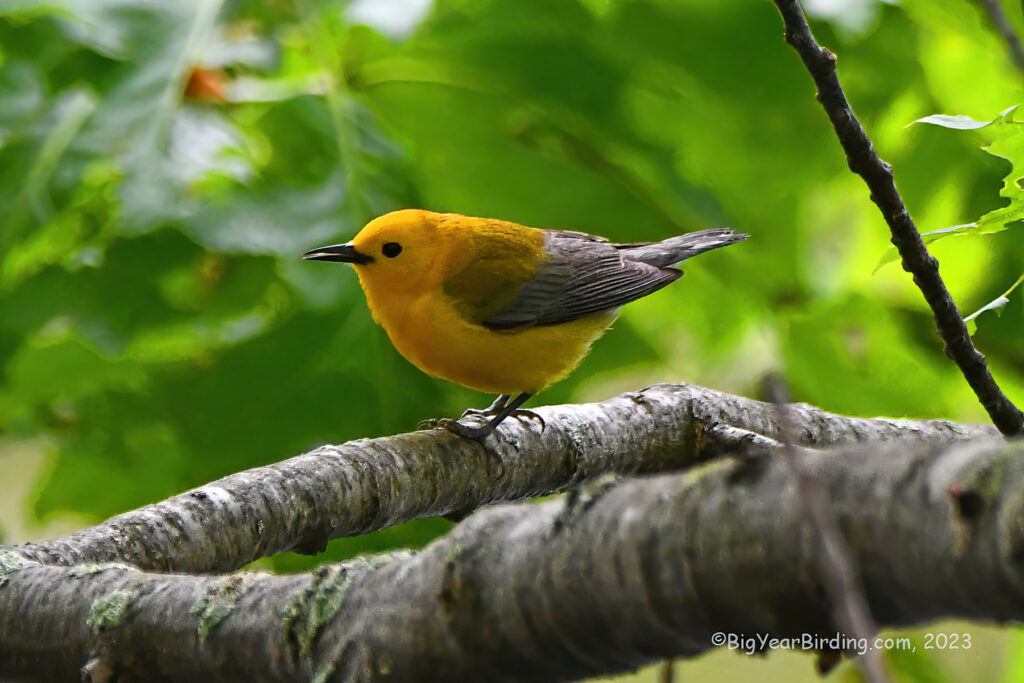
Prothonotary Warblers are primarily insectivorous, foraging in the understory of forests and along the edges of wetlands. They will also occasionally eat fruit and seeds. During the breeding season, they build their nests in tree cavities, using grasses, mosses, and other plant materials to construct a cup-shaped nest. Females typically lay 3-7 eggs, which they incubate for about 12-13 days. After hatching, the young are fed by both parents for about 10-12 days before fledging.
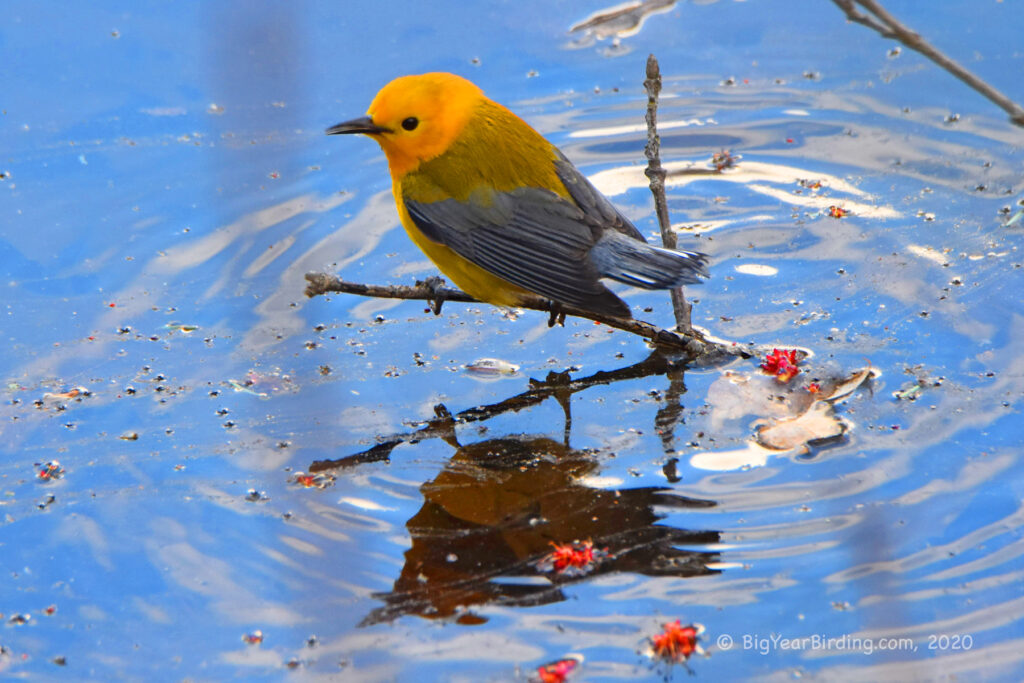
The Prothonotary Warbler is a beloved species among birdwatchers and conservationists, as it is both beautiful and ecologically important. The species has experienced declines in recent years due to habitat loss and fragmentation, making conservation efforts crucial to its survival. Several conservation programs, such as nest box projects and habitat restoration initiatives, have been established to help protect the Prothonotary Warbler and other species that depend on bottomland hardwood forests and wetlands.
